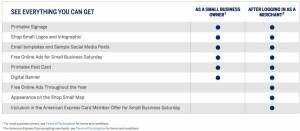Effective digital advertising is all about context, and columnist Phil Schraeder notes that in a cross-device world, getting context right requires a new set of tools and a new way of thinking.

“The right consumer at the right time at the right place.”
That familiar mantra is exactly what marketers should be aiming for… right?
Yes, of course, in a broad sense. But in an ever-evolving advertising landscape increasingly dominated by programmatic, the “three rights” are overly simplistic. Arguably dangerously simplistic, particularly in a mobile-first advertising environment.
Let’s break it down:
Who’s the right consumer?
Consider how marketers are reaching — or not reaching — “the right consumer” circa 2016. What was, in the cookie-centric desktop ecosystem, relatively straightforward, can quickly go haywire in a cross-platform universe, because cookies are pretty nonexistent in the mobile environment, and cross-device tracking remains, for many marketers, a pipe dream.
Over the summer, GumGum (disclosure: my employer) conducted a mobile-focused survey of 300 advertising agency reps for a wide variety of brands. Just one in five said that they’re currently focusing on cross-device targeting.
What that means is that an advertiser may think they know the right consumer to target on desktop, and they may think they know the right consumer to target on mobile. But can they reach (retarget) that desktop consumer when she shifts her media consumption to a smartphone or tablet? Chances are, no. This can result in a hypothetical consumer being “seen” as several different consumers, or, more likely, just being forgotten about — out of sight, out of mind — when she shifts between devices.
What’s the right time?
Without the benefit of cross-platform intel on consumer identity, another thing that’s going haywire for plenty of marketers these days is attribution. The effectiveness of campaigns is too often judged on when a sale is made — but such so-called “last-touch attribution” can be wildly misleading, because it can mean that the marketing done in the final stretch of the consumer journey gets all the credit for the sale.
A consumer may have, for instance, researched a potential purchase on her mobile or tablet — and would have been served relevant ads “at the right time” while doing so — only to ultimately make the purchase when she’s back at her desktop. There are many reasons for this, including habit/loyalty (e.g., a well-established pattern of one-click shopping on Amazon on her desktop, where her password and credit card information is saved) and ease of use (many retailers’ sites are still not mobile-optimized).
The journey online is vast and layered, making it unfair to give credit only to the last-touch contributor — which too often remains desktop.
Today, consumers live on mobile. In fact, 42 percent of our surveyed agency representatives told us that they expected the majority of total traffic to clients’ sites to come from mobile by the end of 2016. And yet our survey also revealed that almost a quarter (23 percent) of brands are spending 10 percent or less of their marketing budget on mobile.
That’s because marketers think they know when they’re reaching consumers, but they really don’t.
Where’s the right place?
“Viewability” — making sure an ad is on the screen in such a way that a consumer can actually see it — remains a big concern in digital publishing. While it’s great that marketers are demanding greater accountability and publishers are finding ways to increase the viewability of their ad units, the whole viewability issue ignores a larger reality: just because an ad can be seen doesn’t mean it is being seen.
So your ad appears “above the fold” on desktop — as opposed to buried at the bottom of a web page, where almost nobody ever scrolls? That’s a victory, maybe, but it’s a victory that should have happened years ago and is increasingly irrelevant in a mobile-centric world.
That’s why The New York Times, for instance, says it’s increasingly shunning traditional banner ads in favor “its own flexible format that works across devices and looks more ‘native’ to its site,” describing its Flex Frame offering. A Flex Frame ad that appears banner-like on desktop can be automatically reconfigured to be broken up and inserted between the paragraphs of text in an article viewed on mobile.
There’s an urgent need for such new ad offerings because all the talk about the “right place” on desktop — and real estate distinctions like “above the fold” and “right rail” — are meaningless on mobile, where all that matters is the singular scroll or stream of content on screen.
Getting it right
The bottom line is that marketers and publishers have to bring “right consumer, right place, right time” into a new generation.
The good news is that there are more and more fresh approaches and cutting-edge ad technologies that address the demands and nuances of a cross-platform universe. The solutions start with bona fide cross-platform targeting (the new “right consumer”) and extend to contextual targeting and trend targeting (think of both of those as the new “right time”), as well as innovative ad placements within the content flow (the new “right place”), including native advertising, in-image advertising and dynamic units such as the the Times’ Flex Frame.
The most important consideration of all, though, might be rethinking not only how your marketing gets made within marketing departments and in partnership with agencies, but also how it lives and breathes in the wild. And that means thinking of your ad tech vendors as partners, too.
Because advertising isn’t about just about beautiful creative. It’s about context — and a whole new world of right consumer, right time and right place.
Some opinions expressed in this article may be those of a guest author and not necessarily Marketing Land. Staff authors are listed here.
Marketing Land – Internet Marketing News, Strategies & Tips
(102)
Report Post








